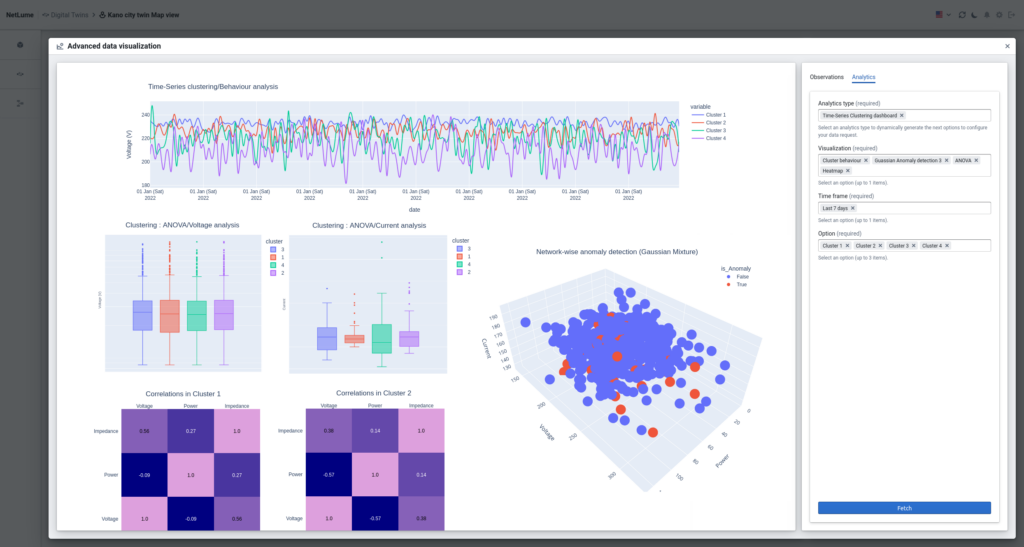
In the rapidly evolving landscape of technology, the Internet of Things (IoT) has emerged as a game-changer. IoT connects various devices, sensors, and systems to enable real-time data collection and analysis, paving the way for smarter decision-making and more efficient operations. However, the sheer volume and diversity of IoT devices necessitate effective management. This is where IoT device management comes into play, and NetLume is leading the charge in this field. In this article, we will explore the significance of IoT device management, its role in shaping the future, and how NetLume is revolutionizing this space.
The Essence of IoT Device Management
Imagine an ant colony, where each ant has a unique role and contributes to the overall success of the colony. Similarly, in an IoT network, each device has a mission, and often, there are countless devices working in harmony. IoT device management is the art of overseeing and optimizing these devices to ensure they function efficiently and securely.
Key Factors Highlighting the Importance of IoT Device Management
- Network Size: The larger the network, the more critical device management becomes. With dozens, hundreds, or even thousands of devices, a centralized management solution is essential.
- Remote Locations: IoT devices are often deployed in remote, hard-to-reach, or dangerous locations. Ensuring their health and performance remotely is crucial.
- Condition Alerts: Immediate alerts are necessary for issues like devices going offline, security breaches, or battery replacements.
- Resource Efficiency: Effective device management allows companies to allocate resources strategically, reducing unnecessary routine checks.
- Mission Critical: In applications where downtime or failure can result in significant financial losses or fines, device management is non-negotiable.
The Basics of IoT Device Management
IoT device management involves several key elements:
- Provisioning: Setting up devices for the first time, customizing their settings, and integrating them into the network.
- Authentication: Confirming device identity and user access, ensuring only authorized devices are enrolled.
- Configuration: Customizing device functionality, adding code, and adjusting settings to meet changing requirements.
- Control: Managing device behavior, remotely accessing devices, and making adjustments as needed.
- Monitoring: Observing device metrics, data reporting, notifications, and security to ensure optimal performance.
- Diagnostics: Performing remote diagnostics to identify and resolve issues quickly and efficiently.
- Software Updates: Sending firmware updates, security patches, and code changes to devices as required.
- Maintenance: Ongoing maintenance to keep devices tuned to the needs of the business application.
Integration with Cloud Platforms and Business Processes
Many IoT applications aim to provide critical data for decision-makers within an organization. This requires seamless integration with third-party IoT cloud providers, such as Amazon Web Services, Microsoft Azure, and Google Cloud. IoT device management platforms like NetLume ensure smooth integration with these services.
Contextual IoT Device Management
IoT deployments vary greatly in size, complexity, and objectives. Contextual IoT device management tailors functionality to specific applications, addressing varying data needs and device requirements. Examples include agriculture, solar systems, and electric vehicle charging, each with distinct data and functionality needs.
Capabilities and Limitations of Basic IoT Device Management
Basic IoT device management handles common IoT connectivity requirements such as range, bandwidth, battery life, and provisioning. However, it may lack the advanced features required for complex IoT ecosystems.
NetLume’s Role in IoT Device Management
NetLume stands at the forefront of IoT device management, offering an array of benefits:
- Remote Management: NetLume provides the ability to manage and update any device, anytime, for troubleshooting or enhancing functionality.
- Security: Integrated security tools detect and remediate security breaches while providing 24/7 visibility and reporting.
- Scalability: NetLume enables the growth of deployments through remote monitoring and management.
- Network Optimization: Tools for deploying software changes to optimize data usage, battery life, and device functionality.
Conclusion
IoT device management is the linchpin of successful IoT deployments. As the IoT landscape continues to expand, it’s clear that effective device management is critical to ensure efficient and secure operations. NetLume’s advanced solutions provide the vital tools and capabilities needed to harness the full potential of IoT. With NetLume, businesses can save time, reduce costs, enhance security, and optimize their devices for specific application needs, ultimately leading to a higher return on investment. The future of IoT belongs to those who master device management, and NetLume is leading the way towards this future.
